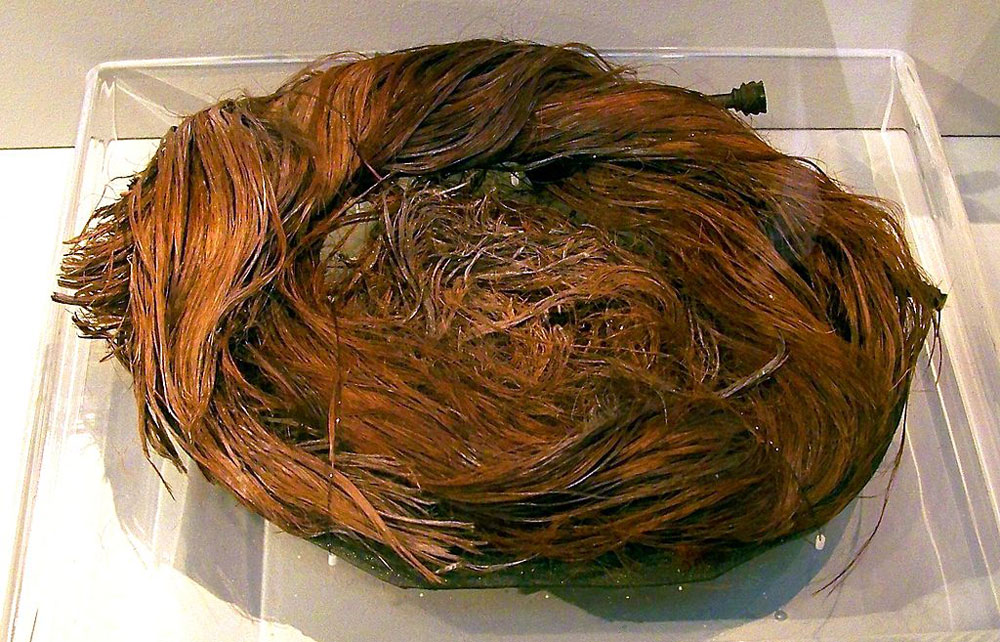
April 22, 2020; Hyperallergic
“MUSEUMS ASSEMBLE!” tweeted the Yorkshire Museum. “It’s time for #CuratorBattle!”
And with that, museums across the world jumped in. The contest was “creepiest object.” Yorkshire’s entry was a 3rd/4th century Roman hair bun, hairpins still in place after 1,600 years.
“CAN YOU BEAT IT?” they asked.
Whether anyone succeeded is up to the reader, but many museums gave it a valiant try. The German History Museum submitted an uncomfortably apropos 400-year-old plague mask. The Museum of Latin American Art offered a photograph called “Death by Tupperware.” A lecturer from a pathology museum in London posted a picture of what tight-laced corsets do to your liver. (Thank goodness that went out of fashion.) The Royal Belgian Institute submitted their petrified chimpanzee.
Some museums’ submissions crossed (or at least toed) an ethical line; human remains are not a joke, nor are objects that are “creepy” merely to those unfamiliar with their artistic or cultural origins. It is in fact museums’ role to initiate and guide the conversations about how we treat cultural patrimony.
But most of them posted in good-humored fun, and it provided a welcome relief from the equally horrifying flood of news about COVID-19, failed government response, and asinine Astroturf “reopen” protests.
Sign up for our free newsletters
Subscribe to NPQ's newsletters to have our top stories delivered directly to your inbox.
By signing up, you agree to our privacy policy and terms of use, and to receive messages from NPQ and our partners.
The hashtag contests also remind us that museums come in a dizzying variety and hold much more than paintings. “Curator battles” offer art, culture, and science museums a chance at humor, connection, and relatability—something they often struggle to master but which is so critical to their public engagement.
Various contests have been launched on Twitter; their themes range from “Sassiest Object” to “Museums from Home” and “Lie To Me.” It’s not just a free look at the highlights of a museum, but a chance, in a quarantined world, to connect.
Of course, the Yorkshire Museum did not invent this idea, nor did it emerge from the COVID era. In 2017, zoos and aquariums made headlines when they contested who had the cutest baby animal. (If you’re going to look at one of these before going to sleep, pick that one.)
Online engagement strategies vary as much as the curator contests. The Nevada Museum of Art is offering a crowdsourced exhibit of homemade art through their hashtag, #HandsOnAtHome. Restaging famous paintings has become a hobby for many quarantined creatives.
Sheltering in place has forced many people to be creative—with how we connect, how we organize our days, even how we eat. Even for essential workers, who must still go about their jobs in hazardous environments but can’t relieve stress in ways they might have done before, things are strange and different.
It’s nice of the Yorkshire Museum and its fellows to remind us there’s always something stranger out there.—Erin Rubin













